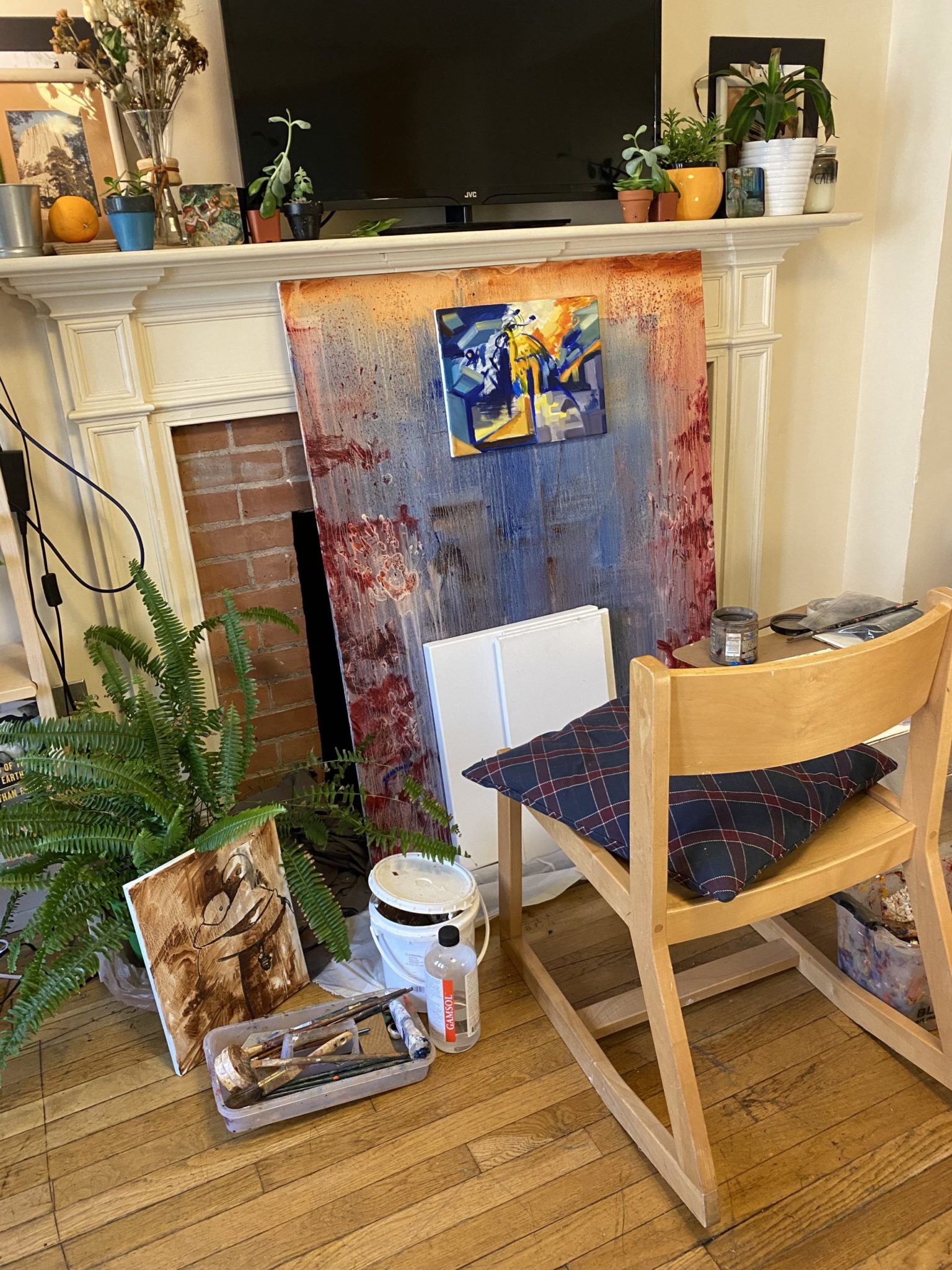
Since the beginning of the COVID-19 pandemic, art major Rosa Chang ’22 has converted her common room into a studio space so she can work on her projects. Chang, who is currently in quarantine on campus, is not the only student to have done so. Some students residing off campus have turned their downtown apartments into makeshift studios, according to Art Director of Undergraduate Studies Lisa Kereszi. One student even painted his walls “like a fresco painter,” akin to a mural-making method in which the artist applies watercolor to wet plaster.
Yale’s transition to remote learning left students and professors scrambling to recreate classroom experiences online. But Chang noted that this is particularly hard for students in majors like art, since art’s entire process is “very physical and in-person.”
Studio spaces at the School of Art give undergraduate artists ample amounts of space, art materials and resources. Chang said remote learning only allows for a “fraction” of this typical art class experience.
Chang said physical art classes “felt a lot more creative and free — there was no sense of restriction within your own space.” She added that quarantine not only restricted her space, but also her “mindset and inspiration.”
Sunnie Liu ’21 is currently enrolled in “Introduction to Sculpture: Metal” and “Introduction to Digital Video.” At Yale, she frequented the Center for Collaborative Arts and Media, regularly rented video equipment, explored New Haven for her video-making and welded hot metal at a metalworking shop.
Now, Liu shoots her videos indoors with an iPhone camera and studies sculpture theoretically. Liu, who usually focuses on graphic design, said she took these classes to step out of her comfort zone and try new mediums.
“Something I really missed about art was doing something physical with my hands,” Liu said, “and now I’m disappointed because I don’t really get to do that.”
But both Liu and Chang said their professors have been extremely supportive and accommodating — offering to send materials and being mindful of disparities in students’ access to resources and space. For example, Chang’s graphic design professor designed a website for students to upload their works, and the Art Department continued to host guest lecturers on Zoom.
Kereszi said the Art Department is allowing students to use whatever materials are on hand — this might mean filming with a smartphone rather than an analog camera, building with popsicle sticks instead of large-scale materials, or creating an audial performance in lieu of an installation or physical piece. Instructors are open to experimental work outside of the syllabus and materials list, she said. Kereszi believes these new modes of working have fostered experimentation and invention by students and faculty alike.
“We have to adapt, and artists are problem-solvers,” Kereszi said. “If we weren’t all navigating the tragedy of a worldwide pandemic, it might be exciting to be pulled out of one box and plunged into another, set free to experiment with whatever household materials one has on hand.” ]
Kereszi sees this time as an “important moment” for digital media such as virtual reality, interactive web design and new media, since people are simultaneously living their professional and personal lives in a virtual medium.
Alex Taranto ’23 sees the use of alternative materials as an explorative opportunity. While Taranto’s figure drawing class previously restricted students to charcoal, graphite and pastel, class members can now submit interpretive dances filmed on their phones.
Taranto said she and her classmates “feel like we have the space to explore whatever medium we want. I think a lot of really interesting work has been made in that class that probably wouldn’t have been if we were just in the studio.”
But Taranto added that the switch to remote learning makes it more difficult to interact with her classmates, which affects their ability to give and receive peer commentary. Due to internet connectivity issues and “something about Zoom that makes people uncomfortable to speak,” Taranto said it has become more challenging for her classmates to critique each other’s work.
Samuel Messer, a professor adjunct emeritus of art, believes that modern artists will experience a change in art-making similar to that of the Renaissance — when ideas about drawing and space changed due to novel political, religious and scientific information.
“I think the best of art records the times we are in,” Messer said. “People look at art as a place of comfort, but I also think, historically, they look at works of art to see how people felt in those times.”
Messer added that, historically, much art has been made for public consumption. The closure of institutions, museums and art fairs has incited conversations about what it means to be an artist, opening potential for invention. Messer said difficult times teach artists how valuable it is to “actually be able to make things yourself,” a kind of teaching that is invaluable and impossible to replicate.
“We must adapt to this new situation and make the best of it,” Kereszi said. “We believe that making art and experiencing art is vital to the psychic survival and fabric of our society, so it would make no sense to pull away now from our shared mission to make the world a better place with art.”
Rose Horowtich | rose.horowitch@yale.edu
Freya Savla | freya.savla@yale.edu







